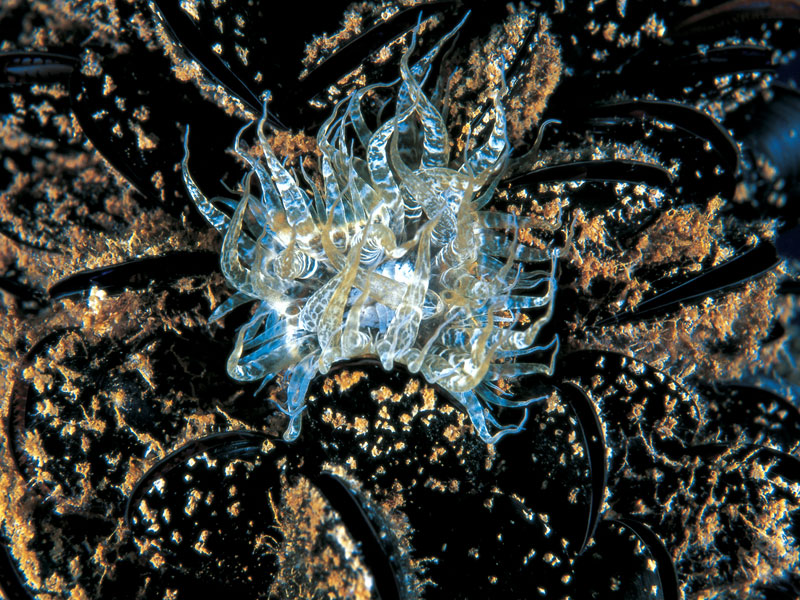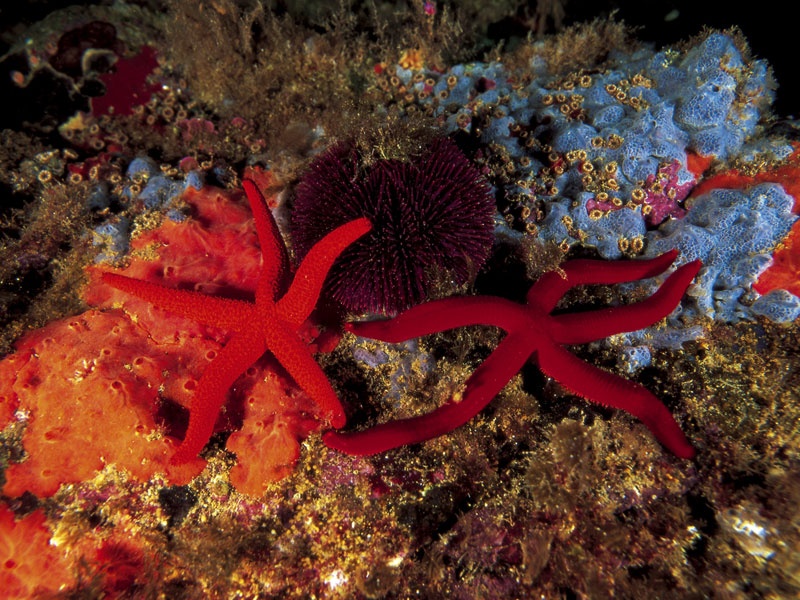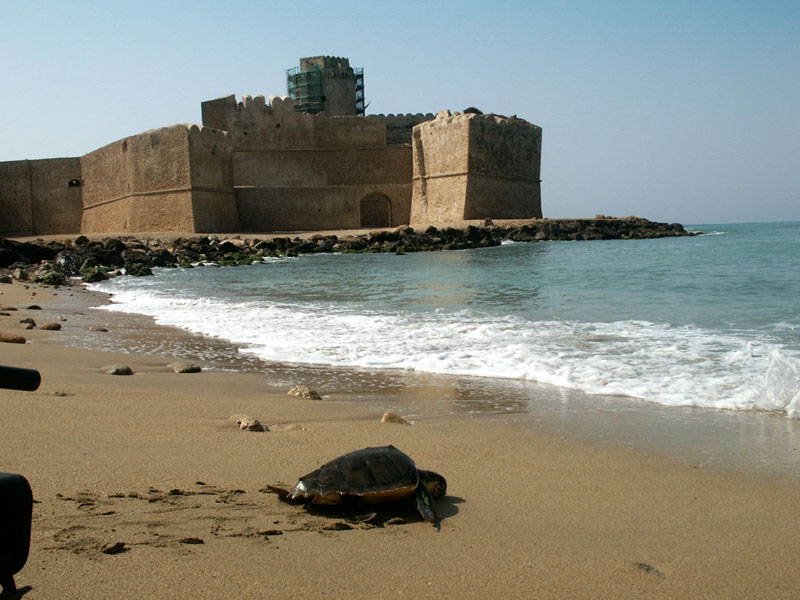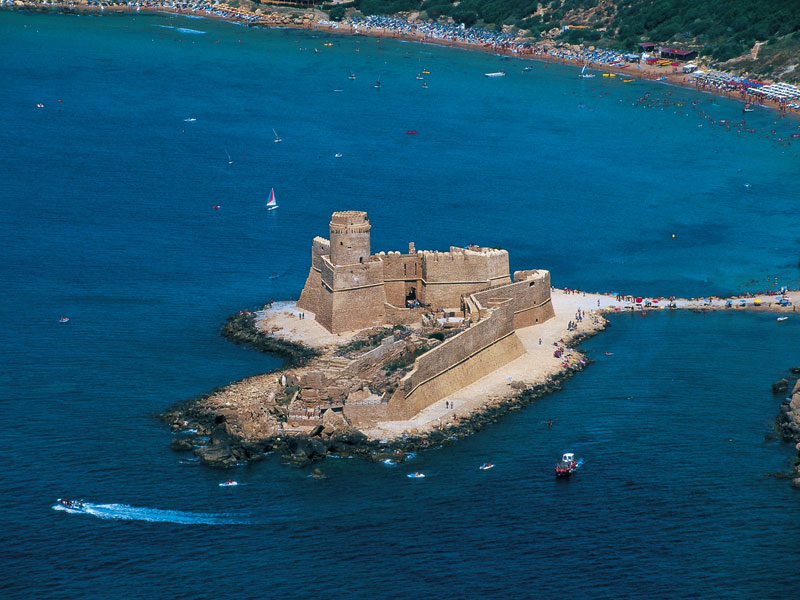Area Marina Protetta Capo Rizzuto
www.ampcaporizzuto.itPoints of Interest
Aquarium
The sea has always been for men a source of culture and welfare, and it has always played a decisive role in our daily life, in particular as a source of food; however, its indiscriminate exploitment, the deterioration of the coasts, and the progressive pollution are compromising its biological life. The Calabria region, with almost 800 km of coastal area, is lapped by two seas, the Ionian Sea and the Tyrrheanian Sea, and its history has always been linked to them. This natural propensity of the region has found an outlet in the establishment of Capo Rizzuto Marine Protected Area.
The qualifications of beauty and uniqueness of this protected area have been recognized by the Ministry of the Environment, and establish a means of communication between man and the sea. If we think about an instrument which might represent the main information point about the sea, we think about the creation of an AQUARIUM: a book, or a "tale" to be read in the right way. Each chapter is made of a section dealing with a certain issue through the most adequate technical means.
Within each section it is possible to summarize the concepts dealt with up to that moment and to test the degree of understanding reached by the visitor. The visual part consists of aquaria reproducing the marine environments within the Reserve.
The Coastal Fortress System during the Middle Age and the Modern Age
At the beginning of the first millenium, the necessity of the Normans
to face the powerful Arabian army favoured the birth of a feudal-like
economic and political system in the South of Italy. Wide areas around
Crotone were enfeoffed, and autonomous fortified microsystems for each
feudal concession were built.
Since the existing defensive means
were not sufficient to face the new fire-arms, with the resumption of
Turkish raids, both the Aragonese and the Spanish viceroys ordered new
works of fortification on the coast, and in the South of Italy a
permanent system of coastal defence was created. The project consisted
of the building of coastal towers in order to report the arrival of the
enemies' ships in the whole kingdom.
The Country Houses and the Coastal Landscape in the Agricultural Large Estate
When the danger of the Arabian invasions ceased, in the countryside villas, hunting lodges, farmhouses, and monasteries were built: Villa Berlingieri, Albani, Sculco in Capo Colonna, Masseria Caracciolo in Scifo, Masseria Domine Maria, the centers of Capo Rizzuto and Le Castella, the Annunziata Monastery.
The coastal stretch of the Reserve is interested by about sixty place names.
They mainly highlight historical and geographical features of the area that have been forgotten.
Aragonese Castle
Via Castello - 88841 Le Castella Tel. +39 0962 795160
For the opening times, please contact the offices of the MPA by calling the number +39 0962 665254 or writing an e-mail to segreteria@riservamarinacaporizzuto.it
Full ticket: Euros 5.00 including guided visit
Reduced ticket: Euros 3.00 for groups of at least 15 persons.
Capo Colonna Archaeological Park
For information, please contact the number +39 0962 934814.
The Castle
The Castle of Le Castella, which in the past was a complex of walls surrounding a town, was built by Andrea Carafa before 1521, but its origins are even more ancient. In chapter 9 of book 3 of his "Naturalis Historia", Pliny calls it Castra Hannibalis and adds that this fortress is situated in a place called Le Castella because of the several towers characterizing it and looking like castles.
Involved Municipalities
- Crotone
The town of Crotone rises on a promontory of the Ionian coast, between the rivers Tacina and Neto. Extending in the west of the medieval village where the acropolis of the ancient Hellenic center lay and where today the imposing Renaissance castle lies, has a mainly modern aspect.
- Capo Colonna
The history of Capo Colonna has been linked to the history of Crotone since its foundation by the Achaeans who, attracted by the charming site, settled here between 740 BC and 718 BC.
- Capo Cimiti
In the south of Crotone, in zone A Strict Nature Reserve, after Capo Colonna, the promontory of Capo Cimiti lies, stretching out into the Ionian Sea with a series of three points.
- Isola Capo Rizzuto
Capo Rizzuto is a relevant tourist center, at about 20 km from Crotone, on the Ionian Sea of Calabria. Here traces of human settlements dating back to over 5,000 years before Christ have been found. Without a doubt, these settlements have been favored by the geographical position, climate and a particularly suitable environment.
- Le Castella
The historical sources attest that the origins of the town of Le Castella date back to the period of the forced stay (204 BC) of the vey famous commander Hannibal from Carthage.









